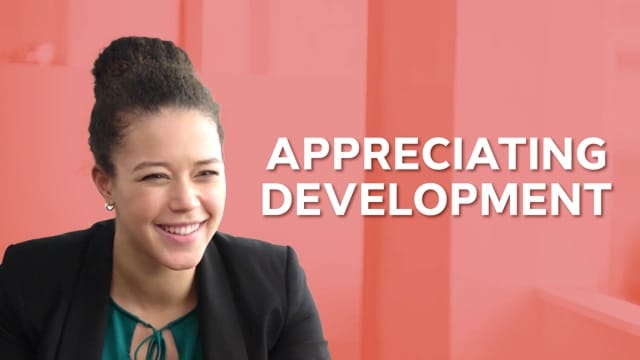7 Professional development ideas for teachers
In this guide
Early in my career, I began doing some calculations during an all-staff professional development day. I looked around the room of 100+ teachers and came up with a rough average hourly wage for those of us in the room. Then I multiplied it by the number of hours we were in training like this per year. I also multiplied it by 30 to represent a typical career length.
I cannot remember the exact number I came up with on that day (perhaps I blocked it out of my mind as a defence mechanism). I do remember thinking it could pay for a Master’s degree or a sabbatical for part of a year. Regardless, my experience as an educator has been one in which I do not feel that the return on investment (both time and money) for professional development is necessarily worth it.
How does professional development improve teaching?
Schools, at their core, are learning organisations, so it is absolutely critical that students are not the only ones who are growing and developing. Society, technology, and careers are rapidly evolving so teachers need the time and opportunities to work on their craft.
The physical design and structure of traditional schooling make it way too easy for teachers to remain within their own four walls throughout their entire careers. The demands of the job can be overwhelming and professional development can feel like yet another requirement added to the sometimes overwhelming list.
Research from the Stanford Center for Opportunity Policy in Education shows that American teachers generally have less preparation time than teachers in other countries and that the highest achieving nations tend to emphasise teacher development before and during the career of their educators.
The authors point out that the key to effective professional development is opportunities for focused and continual learning. The quick ‘grab and go’ approach has little to no long-term benefit. They also recommend that schools provide at least 10 hours per week for collaboration. During this time teachers can lesson plan, discuss curriculum, evaluate student progress and provide feedback from one another.
Increasing funding for professional development or reorganising school days for more prep time are very difficult challenges to take on. Even within the typical time and money constraints, professional development can improve if it is intentionally designed to focus on growth rather than compliance.
The ideas listed below can be done on limited budgets and extended over long periods of time in order for teachers to dive deeper into important areas that are meaningful for them and their students.
1) Create a book club

I rarely read books during the school year and instead rely on shorter podcasts that I can play in the car or while I am falling asleep at night. One exception to this trend is when I join a book club with colleagues because the sense of community creates an added motivation.
Book choice is critical in order to gain initial interest but so are the members of your group. Mess up on either and the benefits of this exercise diminish greatly. Try to screen out the perpetual naysayers (those who are always saying “That could never work here” or “My students can’t do that”). Instead, build a group of people who love to start sentences with “How might we…” or “What if…” I also highly recommend inviting someone from the senior leadership team or someone else with decision-making authority to participate because it will make it easier to turn ideas into action during the process.
As for book selection, there are plenty of school/education-focused ones available but try not to limit your choices to teaching specific topics. I am currently working on trying to get a group of teachers, parents, and senior leaders to read The Anxious Generation: How the Great Rewiring of Childhood Is Causing an Epidemic of Mental Illness since student wellness is a critical area for our cohort.
A couple of years ago, the maths department at our school read Math-ish: Finding Creativity, Diversity, and Meaning in Mathematics. This experience led one of the teachers to connect with me and we began designing a new Algebra and Design program that we are launching this autumn. The book and conversations he had with his department members pushed him to rethink the way we were teaching maths and test out alternate approaches.
The first time I was a part of a book club for professional development purposes was when a group of us decided to read Creative Schools: The Grassroots Revolution That’s Transforming Education. We had some amazing conversations and enjoyed the book, but this is when we learned how important it was to invite a decision-maker to be a part of the club. Without the wit, charm, and intelligence of Sir Ken Robinson, we struggled to get traction on our ideas at a systems-wide level. Nonetheless, all of us as individuals started rethinking what was possible in our classrooms.
The great thing about this type of professional development is that it does not need to be restricted to people who you work with directly. Teachers at another school or across the globe can participate in this activity just as easily. In fact, during the pandemic I joined an online group led by Sir Ken Robinson’s daughter, Kate Robinson, to discuss Imagine If . . .: Creating a Future for Us All, the book she helped finish after her father sadly passed away.
2) Professional conferences
There are so many great opportunities to attend education conferences that focus on a variety of topics such as technology, student support, and literacy. These types of conferences should definitely be a part of your professional development plan but you should not limit yourself to conferences in the education sector.
Attending professional conferences can provide an entirely different framework for how to develop as an educator. Immersing yourself in an industry sector helps you tie specific student outcomes to the professional skills needed for success in the working world.
This may seem more applicable to people who have been teaching for a long time, but teachers with any amount of experience can benefit. Seeing how professionals communicate, collaborate, and innovate lets us ‘steal’ those practices and use our teacher magic to adapt them to our own educational settings.
Adobe Max was the first professional conference I attended as a teacher and it was such a powerful experience that I rarely register for education conferences anymore. The creativity and excitement throughout the week were reinvigorating but I was also able to spend time networking. This led to access to new resources I could use and even a couple of guest speakers I still call on years later.
If possible, try to attend a conference with at least one other colleague and intentionally design your sessions so that you are not in the same ones. Debrief after the conference and develop a list of action items based on what you learned either directly or indirectly by attending. Then, hold each other accountable for implementing those ideas over the following 3-6 months. Try to meet regularly and discuss progress as well as new insights.
3) Reflective learning walks
In a Reflective Learning Walk, a group of educators spend a day observing a handful of different classrooms in action at their school. There is usually a specific area they are focusing on such as student engagement, technology usage, lesson design, etc. Throughout the day, the group discusses what they observed and how that can inform their own practices.
I have to admit I have never officially ‘participated’ in a Reflective Learning Walk. It became a buzz topic in our school a few years ago but it came off as yet another outside consultant-driven activity meant to check a box, and thus lacked the drive it needed to succeed.
That being said, I have opened my doors to numerous groups doing a Reflective Learning Walk. I also hear from participants that it is an incredibly valuable experience, especially since all it really requires is a substitute to cover your classes for the day.
I still personally prefer the ‘Shadow a Student’ experience (see below) but this is a great way to see the classroom from a different perspective and get inspired by new approaches.
After the Reflective Learning Walk, I usually bump into a teacher that observed my class and we end up discussing some of the takeaways the group uncovered. This is typically a teacher I do not know very well (we have a huge staff) so it helps build a new professional relationship. Inevitably, they will point out something they noticed that I am not aware of and/or offer a suggestion or resource that ties into something I was doing that day in class. Win-win for both of us (and our students!).
This type of PD is a really powerful way to develop a sense of community among the staff and foster mutual respect for one another. On most days, another adult never sees what we are doing so Reflective Learning Walks are a short-term activity that reaps long-term benefits for everyone involved.
4) Shadow a student
Shortly after being introduced to Design Thinking, I launched a design team at our school to identify problems with our learning environment and then prototype and test potential solutions.
One of the most powerful experiences of my career was when eight of us participated in a ‘Shadow a Student’ event. We were given the timetables of eight random students who were fairly representative of our student body in terms of extracurriculars and academics.
We contacted each student ahead of time and let them know we would be sitting in on each of their lessons for an entire day. We made it clear that we were not watching them but were instead there to better understand their daily experience. We also made sure to give each teacher notice that we were coming.
We all took notes throughout the day and came away with a wildly new perspective of what it was like to be a student.
The next steps were critical though.
First, we gathered all of the students and asked them some follow-up questions such as “Was that typical of a normal day for you?” and “What motivated you to choose that subject?” Their answers and the ensuing discussion exponentially multiplied the insights we gathered during the shadowing.
Next, we met each Monday morning for a month to prioritise the biggest issues and opportunities uncovered during this process. We then assigned a leader to each item to ensure we prioritised any ideas that we thought could be beneficial to the overall learning experience.
Full disclosure: Our senior leadership team turned over during this process and we lost a lot of momentum as a group, but it is clear that each of us shifted our practice as a result.
Even though we did not accomplish our lofty goals, we still walked away with more empathy for our students, a sense of ownership over our school, and a stronger collaborative spirit. Not to mention, that students were genuinely appreciative of the fact that teachers were so interested to understand what they were going through.
5) Visiting a different school

One of the best ways to learn and grow as an educator is to get away from what you are accustomed to and see how things are being done in a different environment. We all like our habits and routines, but sometimes this can get in the way of taking risks or trying new things.
This is another example of a professional development activity that improves with numbers. Get a group of teachers together and spend a day at another school, whether that is in your area or further away.
It is important to have a clear plan or focus going into this experience. Although you can gain valuable knowledge just by observing a new environment, agreeing on areas of focus ahead of time helps each member to be able to contribute to affixed areas of discussion or topics post-visit.
Ideally, you meet with some teachers and someone from senior leadership at the school you are visiting before classes start in the morning and then schedule a follow-up meeting after the school day ends. This is a great way to understand the history, background, and struggles associated with what you saw and reflect on the experience whilst it is still fresh in your mind.
It is not always possible, but if the school is comfortable, get permission to talk with students and ask them questions related to what you are seeing and experiencing throughout the day.
Before Covid, I made it a point to visit at least one other school per year as part of my personal professional development plan. It is an activity that has never disappointed no matter what the focus of the visit.
For instance, one year I joined a group of teachers looking at modernised spaces and furniture at a secondary school that had recently completed a full modernisation project. Even though we could have looked at pictures online, being able to see firsthand how things were being used (or not used) was invaluable.
The best part of this visit was talking to the individuals involved in the decision-making and purchasing process. That conversation alone probably saved our team months, if not years of navigating the complexities of procurement. Simply sharing knowledge and avoiding “reinventing the wheel” provides enormous value since it highlights best practices and saves the most precious resource of all: time.
6) Online courses
I was originally introduced to this type of professional development when a colleague of mine began teaching a MOOC (Massive Open Online Courses) at a local university. The course was geared towards educators looking to improve their educational technology skills.
It was free and did not offer any official credits or certificates, but it was quite amazing to see how many people were interested in this type of learning as a way to continue developing as a professional. Even though the completion rates were low, it showed that anytime, anywhere learning was an appealing option for educators.
Unfortunately, it is rare for educational institutions to recognise these learning opportunities as valid forms of professional development service hours. In my experience, I have only seen one pilot the concept but it never expanded to the entire staff. As a result, this option becomes one driven entirely by intrinsic motivation and completed outside of normal working hours.
There are numerous online course providers, ranging from completely free to paid versions offering certificates. I tend to focus on ones offering digital badges or certifications that I can add to my resume and use to demonstrate my commitment to lifelong learning.
Depending on your institution, you may be eligible for free access to LinkedIn Learning as an educator. This has become my personal favourite since there are endless topics and they are broken up into small chunks that are manageable with a busy schedule. Plus, it is quick and easy to show your accomplishments on your LinkedIn, resume and other professional profiles.
7) Personalised choices

When I was the Technology Resource Teacher (clunky title for EdTech lead) at our school, I led a project to adopt our school’s first Learning Management System (LMS). This experience quickly opened my eyes to the problems with the one-size-fits-all approach to professional development.
I was working with over 100 teachers with abilities ranging from struggling to use email to those who were designing and hosting their own personal class websites. There was no way to meet the needs of all learners with a whole group training so I enlisted the help of some of my colleagues to lead break-out sessions based on tech ability.
I led the beginner group and designated the other groups to my colleagues. We designed the courses so that each group had a target goal based on their starting ability. We did not aim to get everyone to the same point but instead focused on making sure everyone moved forward, making personal progress, during the process.
The success of this rollout and training led our school to adopt a similar approach for our school-wide professional development the following year. Every teacher was still required to show up for PD every Monday morning but we had added the element of choice into the equation to make the experience more personal and meaningful.
Topics ranged from classroom management to tech tools to active learning strategies. Teachers were allowed to propose and start their own groups as well. Teachers were allowed to move through different groups from week to week but most ended up staying in one group, taking advantage of the opportunity to really invest in a specific area of interest.
It takes some work convincing leadership of this new approach, but, as it does not require additional time or money, those words will have leadership’s attention before you even broach the learning advantages. The more choice and time that is provided, the more likely the outcomes will be impactful for everyone involved.
References
- Darling-Hammond, L., Wei, R. C., & Andree, A. (2010, August). How High-Achieving Countries Develop Great Teachers | Stanford Center for Opportunity Policy in Education. Stanford Center for Opportunity Policy in Education |. Retrieved August 27, 2024, from https://edpolicy.stanford.edu/sites/default/files/publications/how-high-achieving-countries-develop-great-teachers.pdf
- Design Thinking Defined. (n.d.). IDEO Design Thinking. Retrieved August 26, 2024, from https://designthinking.ideo.com/

Nick Schwab
briefcase iconLearning Experience Designer
Nick combines his background in psychology, education and design to create physical and digital experiences that empower, engage, and excite learners. His passion lies in constantly developing new learning pathways for students that challenge the status quo in education.
Other posts
Want more content like this?
Subscribe for blog updates, monthly video releases, trending topics, and exclusive content delivered straight to your inbox.












